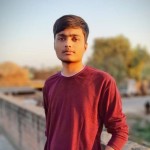Holi is one of the most vibrant and colorful festivals celebrated in India. Also known as the “festival of colors”, Holi is celebrated with great enthusiasm and fervor throughout the country. It is a joyous occasion that brings people of all ages and communities together. In this article, we will delve deeper into the origins and significance of Holi.
1. History and Origin
The history of Holi dates back to ancient India, where it was known as Holika or Holikotsav. The festival is believed to have originated as a celebration of the victory of good over evil and the arrival of spring. According to Hindu mythology, Holi commemorates the story of Prahlad, a young devotee of Lord Vishnu, who was saved from the clutches of his evil father, Hiranyakashipu, by the grace of Lord Vishnu.
Hiranyakashipu was a demon king who wanted to be worshipped as a god. He forbade his son, Prahlad, from worshipping Lord Vishnu and threatened him with dire consequences. However, Prahlad continued to worship Lord Vishnu despite his father’s warnings. Hiranyakashipu decided to get rid of his son by burning him alive, but Prahlad survived with the help of Lord Vishnu. Holika, Hiranyakashipu’s sister, was burnt to death instead, as she had a boon that made her immune to fire.
The story of Prahlad and Holika is symbolic of the victory of good over evil and the power of devotion. The burning of Holika is celebrated as Holi, with people lighting bonfires called Holika Dahan, the night before the festival.
2. Significance and Celebrations
Holi is a festival of colors, joy, and merriment. It is celebrated on the full moon day in the Hindu month of Phalguna, which falls between February and March. The festival is celebrated for two days, with the first day being known as Chhoti Holi or Holika Dahan and the second day as Rangwali Holi or Dhulandi.
On the day of Holika Dahan, people gather around a bonfire and offer prayers to Lord Vishnu and Lord Shiva. They also perform aarti and offer flowers, sweets, and coconut to the fire. The burning of the bonfire symbolizes the victory of good over evil and the end of winter.
On the second day, people play with colors and water, sing and dance, and exchange sweets and greetings. The streets come alive with people throwing colored powders and water at each other, spraying water from water guns, and dancing to the beat of drums and music. People also visit their friends and relatives, share food, and exchange gifts.
The festival is celebrated with great enthusiasm and unity, regardless of caste, creed, or religion. It brings people together and promotes love, friendship, and harmony. Holi is a time to forget differences and celebrate life with joy and happiness.
3. Regional Variations
Holi is celebrated differently in different parts of India, with each region having its own unique customs and traditions. Here are some of the regional variations of Holi:
(A) Mathura and Vrindavan: These cities in Uttar Pradesh are famous for their Holi celebrations, which attract visitors from all over the world. The festivities last for over a week, with people playing with colors, flowers, and water, and dancing to the tune of traditional songs.
(B) Barsana: A village in Uttar Pradesh, Barsana is famous for its Lathmar Holi, where women playfully beat men with sticks. The men have to defend themselves with shields, and the one who is unable to do so becomes the winner.



You must be logged in to post a comment.